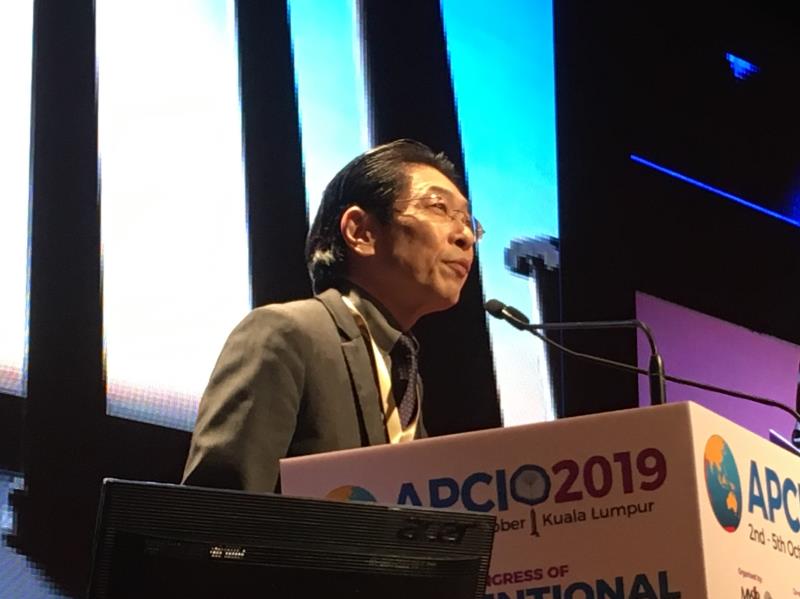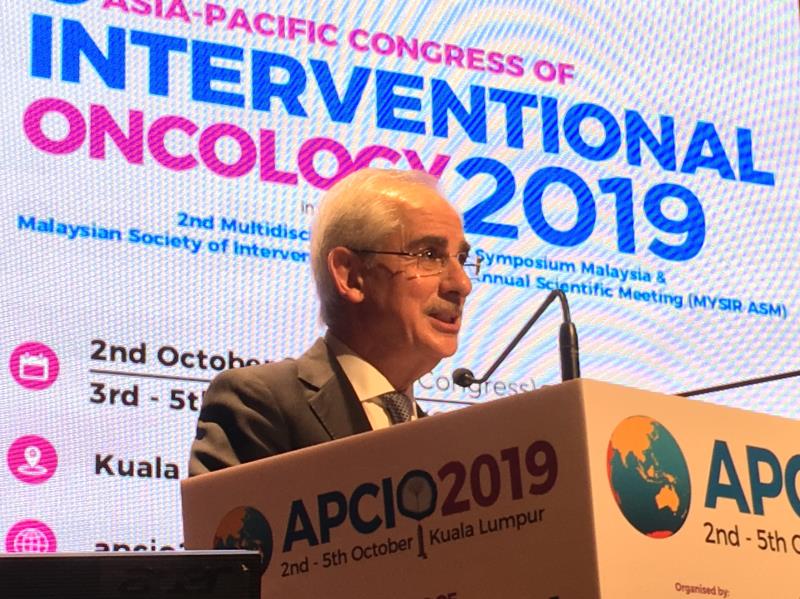 Dr Yasuaki Arai
Dr Yasuaki AraiDespite the known effectiveness of various interventional oncology (IO) procedures in many areas of cancer treatment, many continue to be overlooked in treatment guidelines due to evidence issues, say experts.
“IO procedures can support surgeons, aid more precise diagnoses, resolve post-treatment complications, and relieve palliative care patients,” said Dr Yasuaki Arai, chief interventional radiologist and former hospital director of the National Cancer Centre (NCC) Hospital, Japan. “However, in the medical world, most IOs are not recognized as standard treatment because of lack of evidence from phase III/randomized controlled trials (RCTs).”
Speaking at the 6th Asia-Pacific Congress of Interventional Oncology (APCIO) 2019, Arai noted that while the Barcelona Clinic Liver Cancer (BCLC) staging system recognized RFA* and TACE** as standard treatments for liver cancer, guidelines on other specific cancers and general treatment by other major organizations—eg, the National Comprehensive Cancer Network and the European Society for Medical Oncology—only advised IO procedures as options for selected patients, with resection preferred over local ablation, or omitted IO entirely.
“For example, in cases of painful vertebral bone metastases, we interventional radiologists know PVP*** is a good choice. But no one can say ‘PVP is the standard treatment for this patient,’ because there is no evidence to support them in guidelines,” said Arai.
To change the situation, Arai established the Japan Interventional Radiology in Oncology Study Group (JIVROSG) in 2002, which has since been conducting a series of phase I to III trials on various procedures and applications. Arai reported that recently published phase III RCT data for stent placement for vena cava SVC/IVC syndrome showed superior clinical outcomes over standard palliative treatment, while another two RCTs for PTEG# and Denver shunt had completed with positive results. [Support Care Cancer 2019;27(3):1081–1088]
“We have the hope that these IO procedures will be listed up on guidelines soon because of these evidences,” said Arai. “Making evidence in IO is the most important direction we should move on.”
 Professor Dr Andreas Adam
Professor Dr Andreas AdamSpeaking at the same conference, Professor Dr Andreas Adam, professor of interventional radiology at King’s College London, UK, cautioned against an ‘obsessive’ focus on RCT data to support treatment decisions, noting that studies for practical disciplines were difficult to randomize in the same way as for pharmaceuticals.
“We’ve estimated that in order to get 90 percent power for a randomized comparison between renal surgery and ablation, you would need about 10,800 patients,” said Adam. “Even if you were to embark on such a study, it would be invalidated after a year or two because of technological advances in either technique … The skill of the operator can also be a deciding factor.”
He added that other points of consideration such as very large prospective studies, good registries, patient-reported outcomes, and cost-effectiveness should be taken into account.
“To quote Professor Sir Michael Rowlins, the first chairman of the National Institute of Clinical Excellence (NICE) in the UK: the notion that evidence can be reliably or usefully placed in hierarchies is illusory. Rather, decision-makers need to exercise judgement about whether and when evidence gathered from experimental or observational sources is fit for purpose,” said Adam.